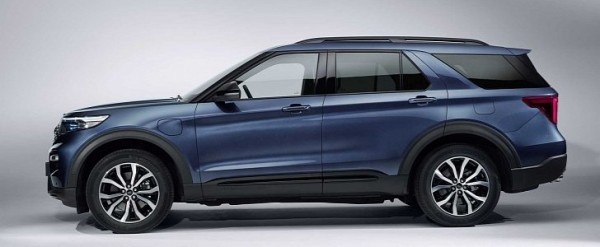
Over in the United States, the Explorer is available with a hybrid option while the Lincoln Aviator levels up to plug-in hybrid. Both are based on the CD6 platform that Ford will use in the next generation of the Mustang. In the case of the Explorer Plug-In Hybrid, the 3.0-liter EcoBoost V6 and an e-motor are the culprits, totaling 450 PS (444 horsepower) and 840 Nm (620 pound-feet) of torque.
Color us surprised the Edge ST for Europe doesn’t match the most fuel-efficient Explorer there is, let alone the Edge ST for America with the 2.7-liter EcoBoost V6. As a plug-in hybrid, the mid-size SUV is much obliged to travel up to 25 miles (40 kilometers) on electricity. A 10-speed automatic transmission comes standard, matched to intelligent all-wheel drive.
3.4 liters per 100 kilometers (69 mpg) and 78 grams of carbon dioxide per kilometer are impressive in their own right, more so if you consider the weight of the Explorer Plug-In Hybrid. Towing? Trailers weighing up to 5,511 pounds (2,500 kilograms) shouldn’t pose a problem to the seven-seater utility vehicle.
Even though it’s designed to save fuel whenever possible, the Explorer PHEV features driving modes that include Normal, Sport, Snow, and Towing. Sales in Europe kick off early in 2020, and two trim levels will be offered for the time being. These are the ST-Line and Platinum, and both feature 20-inch wheels, 10.1-inch touchscreen infotainment, and a 12.3-inch digital instrument cluster. You know, the one with the blue screen.
“We specifically chose a parallel hybrid architecture that lets drivers use all 450 hp and 840 Nm of torque. We’ve even added a more advanced version of our Blind Spot Information System, which covers a 10-meter trailer,” declared Matthias Tonn, chief program engineer for the Explorer in Europe.








